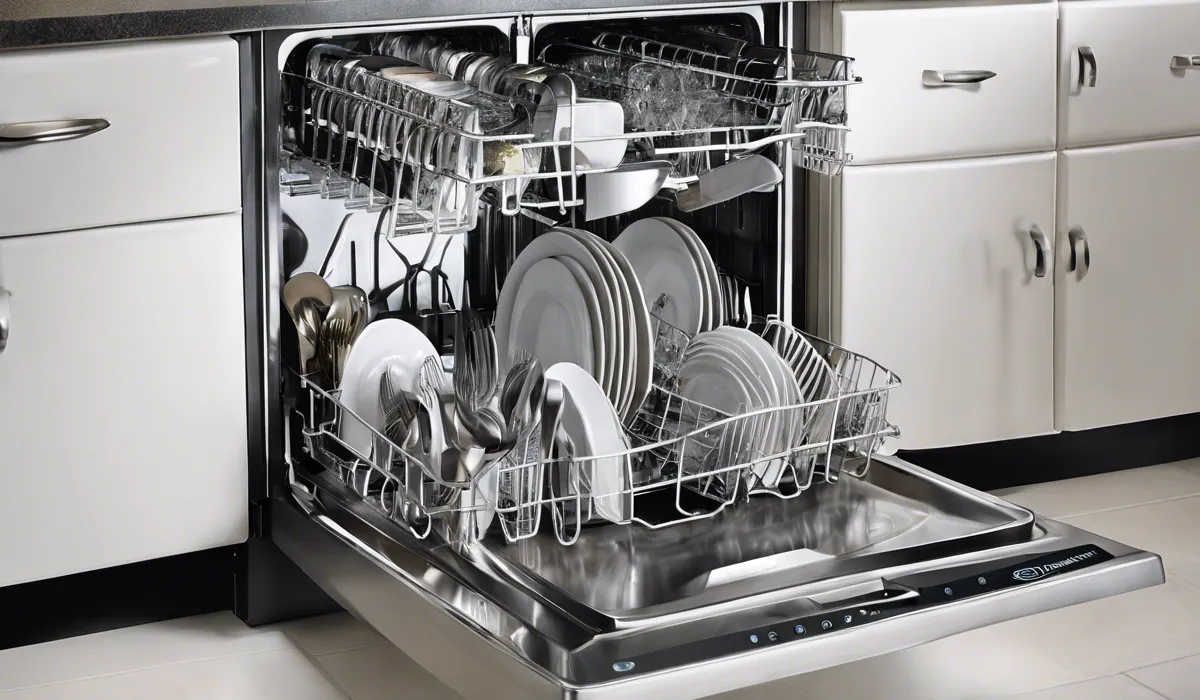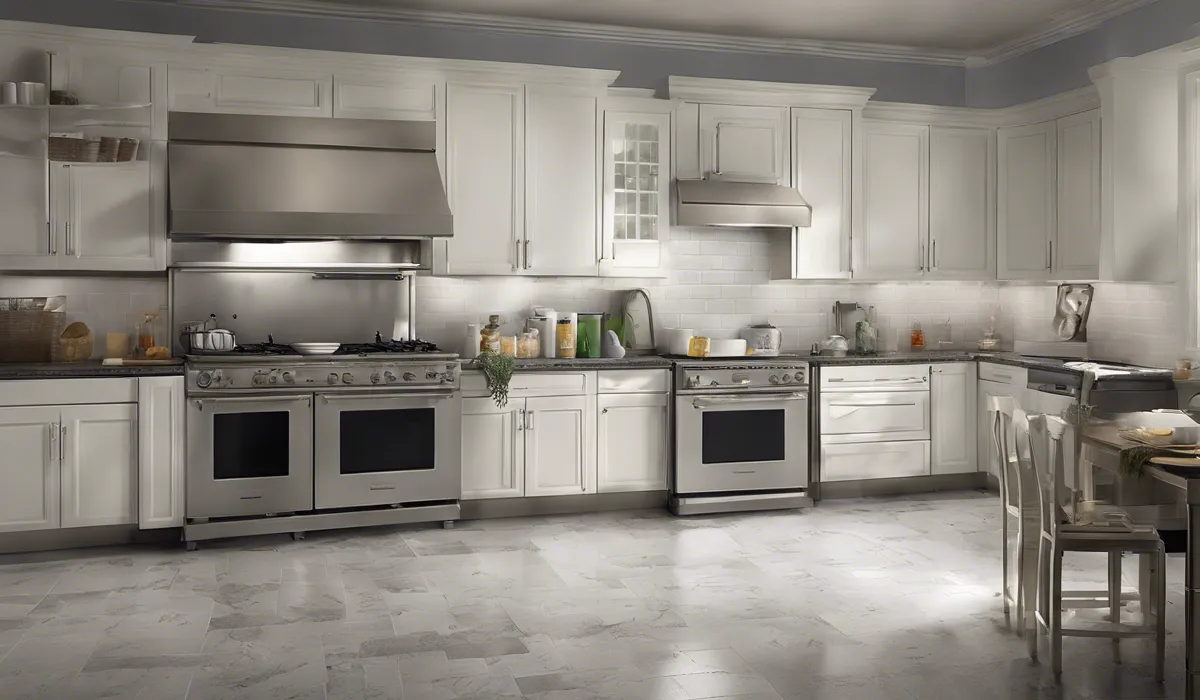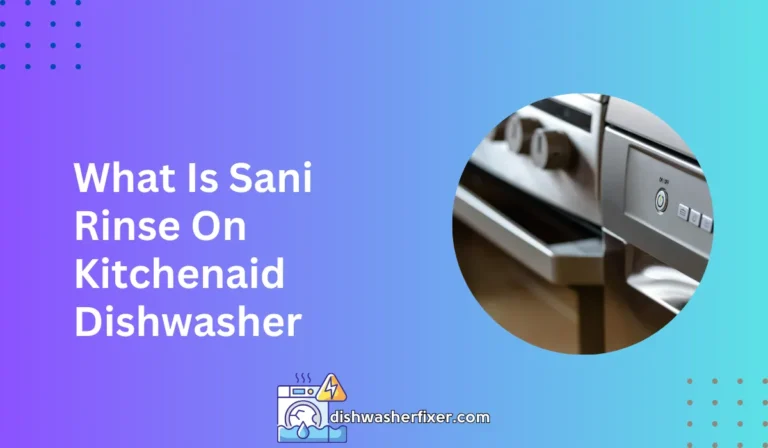Do Dishwashers Have Garbage Disposals? Unveiling the Truth
Many modern dishwashers feature built-in food disposers, similar to garbage disposals, which grind up food particles before flushing them out. However, not all models have this feature. It’s important to check the specifications of the particular dishwasher model in question.
Understanding Dishwasher Drainage Systems

How Dishwashers Drain
Dishwashers are designed to make life easier, automating the task of cleaning dishes.
But have you ever wondered how these appliances manage water drainage? Essentially, after a dishwasher completes its cleaning cycle, it pumps out the dirty water through a drain hose.
This hose typically connects to the kitchen sink drainage system or directly to the garbage disposal unit. The force of the pump ensures that all the wastewater is expelled, leaving your dishes clean and ready for use.
The Role of Filters in Dishwashers
Filters are a crucial component of a dishwasher’s drainage system. They capture and collect food particles and other debris to prevent them from clogging the drain.
Over time, these filters can accumulate a significant amount of waste, which is why it’s essential to clean them regularly. By doing so, you ensure that your dishwasher operates efficiently and that water can flow freely out of the appliance.
Difference Between Dishwasher Filters and Garbage Disposals
While both dishwasher filters and garbage disposals deal with food waste, they function quite differently.
Dishwasher filters are primarily designed to trap solid particles, preventing them from entering the drainage system. In contrast, garbage disposals are more like food processors; they shred food waste into tiny pieces that can easily pass through plumbing.
A key difference is that filters require manual cleaning, whereas garbage disposals self-clean as they grind up waste.
The Function of Garbage Disposals in Kitchens

Purpose of a Garbage Disposal
A garbage disposal is an electrical device installed under the kitchen sink. It serves a vital function in modern kitchens by grinding up food waste into small particles.
This process allows the waste to be washed away easily without clogging pipes, making after-meal cleanup much faster and more efficient.
How Garbage Disposals Work with Kitchen Sinks
Garbage disposals are integrated with kitchen sinks for seamless operation. When food scraps are put into the disposal, a heavy-duty grinder, or impeller plate, powered by an electric motor, breaks down the waste.
Water from the sink faucet then flushes the particles through the plumbing system. This setup is not only convenient but also environmentally friendly as it reduces the amount of waste going to landfills.
Benefits and Drawbacks of Using a Garbage Disposal
Installing a garbage disposal comes with several benefits. It simplifies waste management, reduces unpleasant odors in the kitchen, and is eco-friendly. However, there are also some drawbacks to consider.
Garbage disposals require maintenance and can break down if misused. They shouldn’t be used for certain hard or fibrous food scraps, as these can cause jams or damage the unit.
Dishwashers with Built-In Food Grinders

Overview of Dishwashers with Hard Food Disposers
Some dishwashers come equipped with a feature that takes convenience to the next level: hard food disposers.
These built-in components are like mini garbage disposals, grinding up food particles before they have a chance to clog the filter or drain hose.
This means less pre-rinsing of dishes and less frequent filter cleaning, saving you time and effort in the kitchen.
Comparing Hard Food Disposers to Traditional Garbage Disposals
When comparing hard food disposers in dishwashers to traditional garbage disposals, there are some notable differences. Hard food disposers are specifically designed to handle the types of food waste that typically end up on dishes.
This means they are more focused on dealing with smaller quantities of food. Additionally, they operate automatically during the dishwashing cycle, unlike garbage disposals, which require manual activation.
Maintenance and Considerations for Dishwashers with Built-In Food Grinders
While dishwashers with built-in food grinders offer added convenience, they also require specific maintenance.
It’s important to run the dishwasher regularly to prevent food particles from sitting and potentially causing odors or attracting pests.
Additionally, even with a hard food disposer, you should still avoid letting large, hard objects like bones or fruit pits enter the dishwasher, as they can damage the grinder.
FAQs About Dishwasher Garbage Disposals
Do all modern dishwashers come with built-in garbage disposals?
No, not all modern dishwashers have built-in garbage disposals. It varies by model.
What is the function of a built-in garbage disposal in a dishwasher?
The built-in garbage disposal in a dishwasher grinds up food particles before they are flushed out.
How can I find out if a dishwasher model has a garbage disposal feature?
Check the dishwasher’s specifications or product details to determine if it includes a garbage disposal feature.
Is a dishwasher with a built-in garbage disposal better for handling food waste?
A dishwasher with a built-in garbage disposal may be better equipped to handle food waste without pre-rinsing dishes.
Are there additional maintenance requirements for dishwashers with garbage disposals?
Dishwashers with garbage disposals may require periodic cleaning to ensure the disposal operates effectively.
Final Thoughts
Modern dishwashers often incorporate built-in food disposers that grind up food remnants, though this feature isn’t universal.
Prospective buyers should review the specifications of each dishwasher model to determine whether it includes a food disposer, ensuring it meets their needs.





